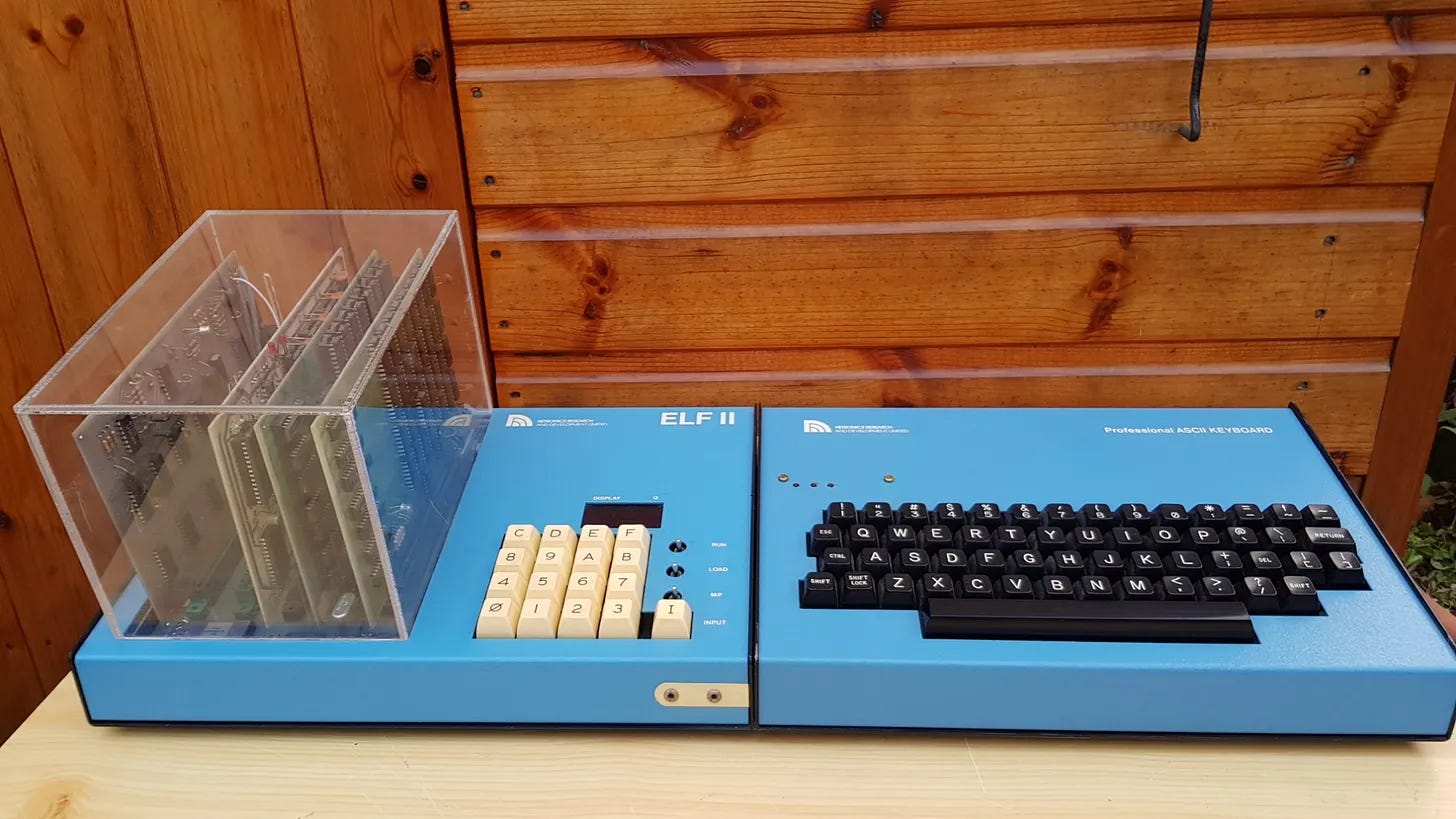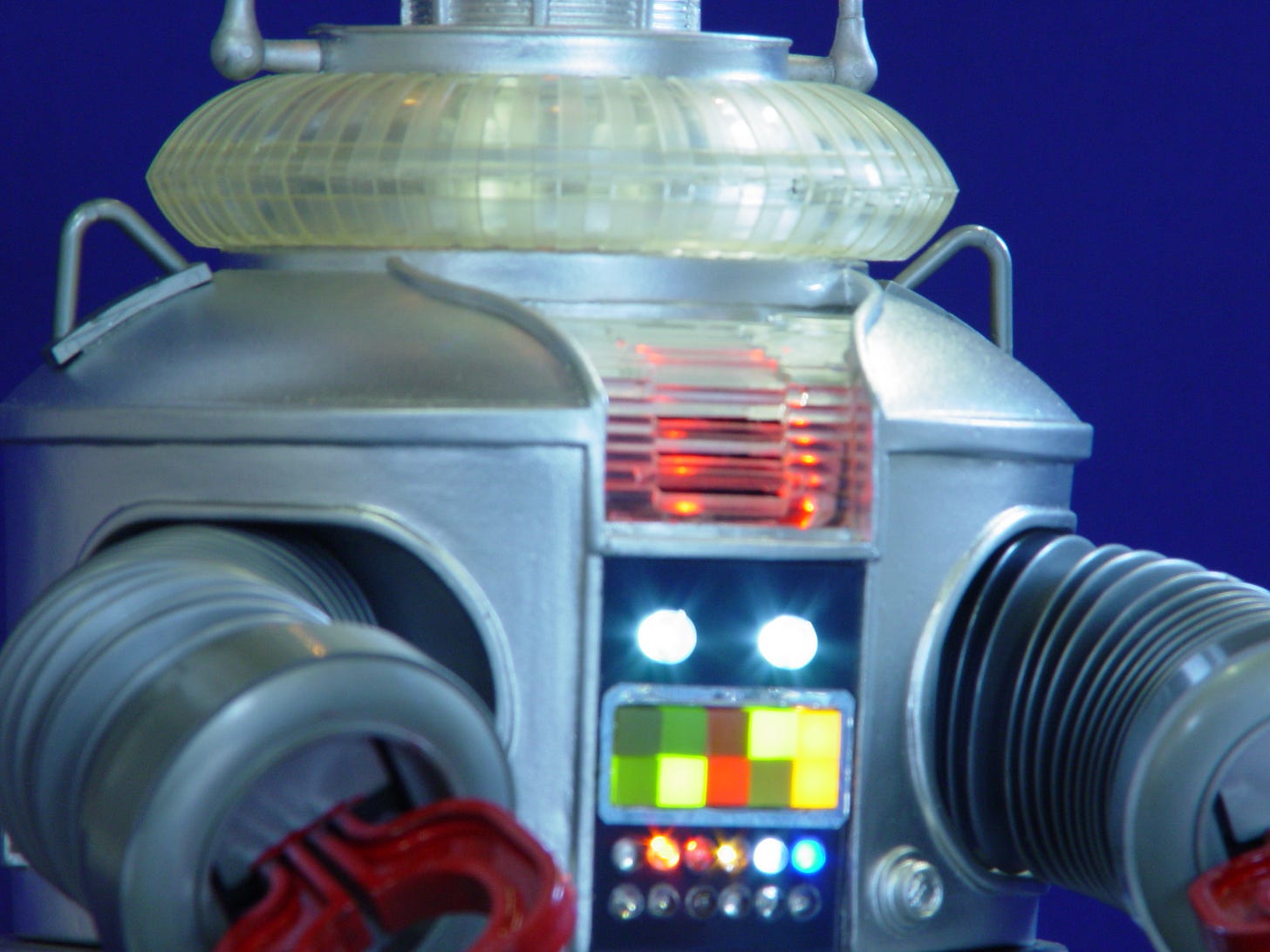The Techwriter Highlight - Paul Backhouse
Paul shares his story from the beginning
As a retired IT professional, I’m now an unpaid caregiver for two vulnerable ladies. My tech life can be summed up as “too many interests, too little time”. My field of interest is applied tech, rather than pure. I specialise in using Arduinos to control robots & give them a voice and to revive or repurpose retro technology. Recent posts include my talking colour recognition system and my Burroughs vintage plasma displays. I also follow the ethical, moral and legal themes of AI.
My Substack is “COPING WITH CARING”. I thought about writing separately in CARING and TECH stacks but decided not to because my projects do indeed help me to Cope with Caring. My tech writing articles are prompted by my projects, to explain, document and share them. I like to include pictures and videos, which gets me into trouble with email space. My next three articles in the pipeline are “picture stories”. My audience is varied, ranging from readers interested in caregiving, a few of whom are terrified by the possibility of becoming carers themselves, through general interest, to retro-computing and robot fans interested in how projects progressed.
I’ve had two distinct careers. For the first 18 years, I was a qualified clerk of the court, advising lay magistrates on law and procedure. Not much to do with tech, you might say. In fact, it was sound knowledge of the courts’ business processes that put me in good stead for my second career. I had been studying technology, mathematical modelling, and systems in my own time. At OU summer school our tutor, a professor, told me (belatedly) I should have made my career in systems!
I started writing about tech projects when I built this RCA1802-based Netronics ELFII, board by board, between 1976 and 1978. I still have it. Those were great days when every invoice from New Milford came with a biblical quote
My Netronics ELF11 with “professional” ASCii Keyboard, “Giant” Comms Board, 2 x 4K static RAM cards, full RPN MATH and BASIC on ROM. (Reverse Polish Notation)
That HEX keypad saw an awful lot of RCA1802 COSMAC machine code action.
But I digress, back to my background. In the 1970’s the English courts had been investigating computerisation. There had been limited piecemeal deployment of incompatible systems from 3 different suppliers. It was a fascinating time, characterised by over-promising by exuberant suppliers, unrealistic user expectations, reluctance to let go of manual procedures, endless compromises, and inadequate funding. Yep, the classic attributes of any government IT project. And I was in the thick of it. For a short while, I had a McDonnell Douglas CMC Reality with Richard Pick’s operating system (the one with the hashing algorithms) pretty much to myself for evaluation. Sadly they were eclipsed by competition from ICL (later Fujitsu), Burroughs, and a smaller up-and-coming company called Sound Techniques.
In Lancashire in the early 1980s, after a spell with an underpowered ICL ME29 serving 3 sites, we ended up with 3 ICL series 39 mainframes serving a county-wide X25 network across 12 courthouse locations, with me as the courts’ systems manager. Not really state of the art it has to be said - all the output was in uppercase. I did my bit, deploying Novell and Ethernet to court offices, writing an interface to send court results directly to the Police, creating Lancashire Magistrates’ Courts’ website, sourcing Braille technology for a blind magistrate and so on… I received an MBE from the Queen “for services to the administration of Justice in Lancashire”.
So started my second career, in IT, as a systems manager for the Lancashire Magistrates’ Courts Committee (MCC). It lasted just a few years. The government decided it wanted national-level management of the courts, and a national computer system to be known as “Libra”, and the MCCs were abolished.
I then began work for what was then the UK Department for Constitution Affairs, later renamed the Ministry of Justice (MoJ). The MoJ was a world of organisational change, deference to judges’ demands, proposals, business cases, system requirements, and bids for funding. Not much pure tech there, but interesting nonetheless. The job entailed a lot of travel, including a dawn Pendolino commute from Lancashire to London 3 days a week. Breakfast on the train was quite nice, but when the opportunity afforded itself, I took early retirement.
Meanwhile… Libra didn’t end well. The system was evolving into bloatware, and Fujitsu walked away from the contract, forcing the MoJ to seek a compromise “Libra” solution from Sound Techniques based on their legacy “Equis” system.
My writing process can best be described as disorganised. I capture random thoughts as they pop into my head, before they fade away, as a note on whichever medium is close at hand, my phone or my weekly shopping list, and assemble these in logical order later as part of a draft. I don’t use AI. There is just one writing tool that I find very useful - synonym lookup on Wordhippo.
With my local technical reputation, a lady kindly passed on her deceased husband’s retro-computer collection, all now stored in my unit. I’ve barely scratched the surface of what’s there:- Speccys, Amstrads et al, but I started by cherry-picking the ACT Apricots, replacing their popped capacitors.
As a good example of the kind of project that prompts me to write a Substack article, I designed and built this real-time disk diagnostics display. Best at full screen to fully appreciate it…
I have a soft spot for ACT Apricots. They had the option of Concurrent CP/M-86 or MD-DOS, a configurable GUI and built-in asynchronous peer-to-peer comms. This next video shows the startup of the Apricot’s GUI. Again, best at full screen to fully appreciate it…
I have 20 or so robots, many of which benefit from Arduino brain transplants. I can’t describe and picture them all here - perhaps I’ll do that in a later “Roboscout Revival” post.
Until 4 or so years ago, I took my model railways and robots along to show off at local exhibitions. Sadly, a combination of Covid and increased caring responsibilities have put a stop to that. Back in 2015 and 2017 my Arduino-enhanced B9 featured at shows and spoke of danger to come….!
“Danger, danger Will Robinson. There is a dangerous alien among us!” This was my Arduino-brained B9 Environmental Robot speaking at an exhibition in Barley Village Hall, Lancashire. Perhaps predicting AI…?
In summary, you may well not see me as a dedicated tech writer. I write an eclectic Substack about tech projects, whilst also aiming to raise the profile of unpaid carers and their human stories, and I even write poetic moments as in “The Summerhouse”.
That just about covers my own Techwriter’s introduction. Thank you very much for reading. As to advice - be yourself, write what *you* want to write from your heart, not what you might guess readers will want to read. Some writers say pictures and videos distract from the text, and may even cause readers to exit an article before the end. I disagree. I firmly believe relevant pictures and videos add impact to the exposition and the visual appeal of the piece. I often take progress images at various stages in a project, to give me an option of compiling a “Picture Story” at the end, even though I may decide not to use them. Be reconciled that some readers will find your article not to their taste and exit early, whilst for others an article may be redeemed by the amazing pictures.
My truism for anyone working in a tech field - it has always been vital to thoroughly understand the client’s core business, and nowadays all the more so with AI.






Loved reading about your background and story Paul. Good luck with everything you are doing :-)
An impressive origin story Paul, and congrats on the MBE!